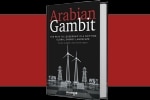Agricultural strategies for a growing population
Gulf Cooperation Council countries enjoy relative food security, per rankings by the Global Food Security Index. However, the GCC’s heavy reliance on food imports makes it vulnerable to major supply chain disruptions. In addition, the region is highly vulnerable to animal disease outbreaks, which can create risk of food shortages and significant economic loss.
New strategies are needed to modernize agricultural systems, diversify local food supplies, predict and control zoonotic diseases, and promote a sustainable approach to natural resources. GCC governments are at a critical juncture for ensuring their growing populations have access to an abundant food supply – but the tools for safeguarding long-term food security are at hand.
Why Strategy&
We work with governments and private entities in the Middle East on large-scale agricultural transformation programs, food security strategies, agricultural agendas, and countrywide agri-partnerships and privatization projects.
With a strong understanding of regional and global market trends, our specialized hands-on team brings extensive experience and unmatched capabilities in the agricultural ecosystem across the region to see projects through from conception to completion.
How we can help you
Growing agricultural strength: Stories from our clients
Developing a national agriculture champion
To help stabilize the country’s agricultural value chain and leadership, one MENA country set about transforming a publicly funded agri-food investment company into a global agriculture champion.
Strategy& helped the company define regional agricultural opportunities as well as the potential impact of a national champion.
We devised an implementation plan that aims to secure the import of strategic commodities and to plug gaps across the value chain. Diversification of the company’s investment portfolio and consolidation of local agri-food players will expand efforts over time and propel the company from regional to global powerhouse.

Improving agricultural service delivery
To improve quality and efficiency, and reduce operational burden, one GCC country launched a program to establish a standalone state-owned enterprise (SOE) to take over agriculture, livestock, and fishery services deliveries previously managed by the government.
Strategy& helped to define the SOE’s vision, mission, and values. We designed a full governance and operating model, identified revenue-generating services, and proposed the transition plan and privatization model.
The result was not only improved service quality, but a solid plan for sustainable provision, improved operations, and more efficient spending throughout the agricultural sector.

Empowering rural farmers
The ministry of agriculture in one MENA nation embarked on a countrywide agricultural rural development program. This program focused on eight key agricultural sectors: coffee, honey, roses, rain-fed crops, livestock, fisheries, fruits, and artisanal products.
The program’s goal was to empower small rural farmers and their families through additional employment opportunities and enhanced income levels. At the same time, the country sought to increase local production to ensure food safety and security, while also preserving natural resources.
Strategy& supported this program by designing a subsidy scheme to incubate small rural farmers until they could reach self-sustainability. We analyzed the rural agriculture sector and created a subsidy target model and payment mechanism, and delivered a complete rural agricultural development strategy to support long-term self-sustainability. The agricultural subsidy scheme and sector strategy design have been approved, and implementation is well underway.

Stimulating growth with agricultural subsidies
Governments in the MENA region face a complex challenge: to design the right agricultural subsidy scheme to stimulate farmer efficiency and productivity.
One GCC nation sought to redesign its agricultural subsidy scheme to align with its strategic goals. Strategy& worked with the ministry to evaluate existing subsidies within the livestock, poultry, aquaculture, and dairy sectors and set up a holistic plan to define, allocate and disburse subsidy payments.

Transitioning to a privatization strategy
A leading institution in the GCC collaborated with Strategy& to develop a strategy for privatizing its milling assets, design the entity’s large-scale restructuring plan, and oversee and manage the privatization and transformation program.
The Strategy& team rolled out the privatization strategy and restructuring plan and successfully managed the setup of four milling companies, including the migration of approximately 3,000 employees, technical and administrative assets, and IT and regulatory capabilities to the target operating model. By April 2021, the milling assets were awarded to the private sector (four consortiums) with a total value of about SAR 5.7 billion.

Contact us












Menu